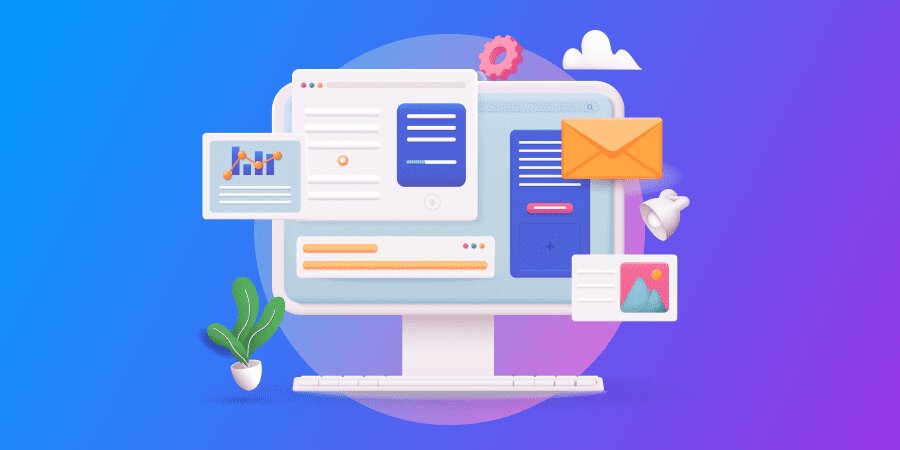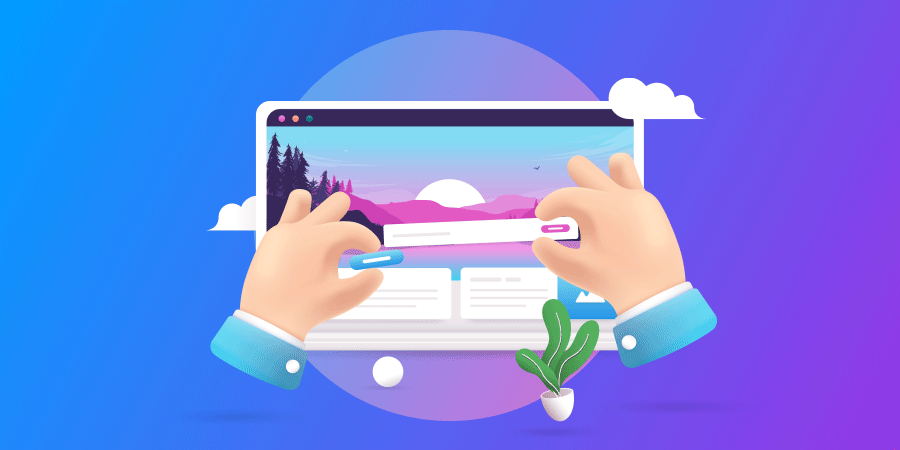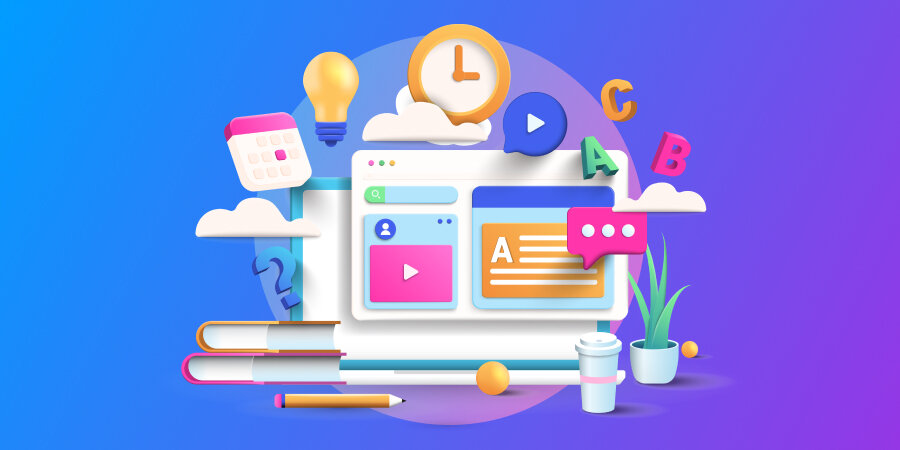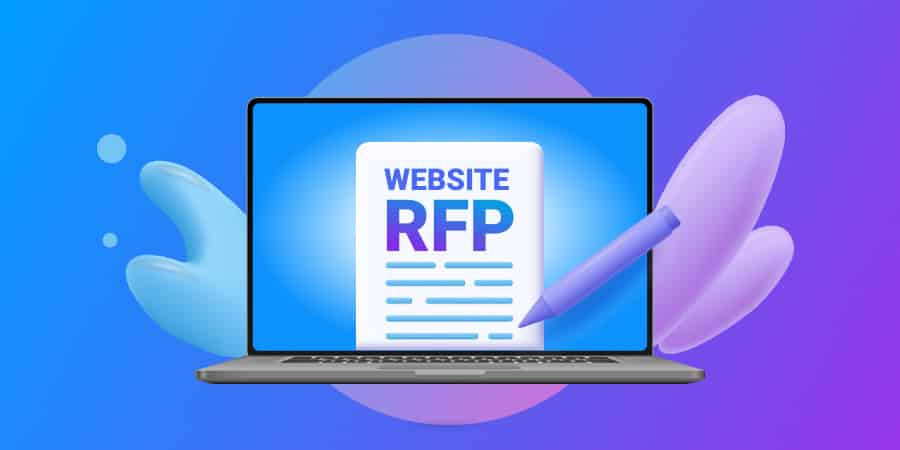Are you in the market for a new website?
If so, you need to know that a website is about more than just building aesthetically pleasing pages – your design decisions not only impact your website’s performance but your brand recognition as well.
How so?
That’s exactly what we’ll explain in this article.
We explain why good web design is important, cover the key elements of good web design, and share how you can find a great web design agency to partner with, to bring your project to life.
Digital Silk builds custom websites. Request A Quote
The Importance Of A Good Website
A well-designed website goes a long way in helping your brand establish an online presence and gain loyal customers.
How?
Here are some of the key reasons why good website design matters:
1. Brand Credibility
One Standford study looked at how healthcare websites affect the company’s credibility, and found that 75% of users judge the company’s credibility based on web design alone — that is, UX and UI design.
Websites are important brand assets, especially in some competitive cities like New York City or Miami. This is where your users come to get educated on your unique value proposition and your offering, as well as to engage with your brand.
As such, they are powerful at shaping your users’ perception of your brand.
2. User Retention
One Google study found that 79% of users who didn’t like what they saw on a website would never return to it.
On the other hand, a study by Adobe found that 59% of users prefer browsing beautifully designed websites over basic ones.
Users are becoming increasingly aware of how web design impacts their overall experience and they have certain expectations.
And if a website fails to deliver, they will leave.
All elements of web design, from navigation to imagery, typography, color palette and more, impact user retention.
3. SERP Rankings
In website design that’s focused on search engine optimization (SEO), expert web designers work with SEO specialists to optimize your website, to help your website rank higher in search engine results pages (SERPs).
This process includes implementing targeted keywords into different website elements, from meta descriptions, title tags and URLs to headers and image name files.
What purpose does this serve?
It increases your brand’s visibility and widens your reach, boosting brand recognition and driving organic traffic to your website.
4. Seamless User Experience
According to Google, over 50% of all web traffic comes from mobile devices. The same study showed that if a website isn’t responsive and it creates a bad mobile experience, users are likely to leave and never return.
A responsive website is designed to provide the same experience on hand-held devices as on desktop screens. This means all the website information (images, text, links, videos) are just as accessible on smaller screens.
In 2022, a mobile-friendly design is a must. Without it, you are unlikely to drive desired results online.
Planning a premium website design for your business? Read our comprehensive blog on high-end web design elements and benefits.
Ask us about our web design process. Schedule A Consultation
9 Elements Of Good Web Design
Regardless of your industry, the size of your business, and your target audience, these nine elements are crucial for web design that engages and converts. We’ll explain each point, and show you a few examples of our recent custom web design projects.
The nine elements of quality web design include:
1. Accessibility
Website accessibility involves a set of practices applied in web design to make the website easier to use for users with hearing, visual, cognitive, or motor limitations.
All the website content and information should be easily perceived and easy to understand. The website itself should also be easy to use and navigate and should support the tools users with hearing, cognitive or other disabilities or limitations use, such as screen reader and speech input software.
2. Intuitive Navigation
It is important that users can easily navigate your website to find the information they are looking for quickly.
Good website navigation is intuitive and created with the user in mind. It uses clear language and features links to important pages prominently so users can easily spot them, but without crowding the homepage with too many links.
Here’s an example of a website with user-friendly navigation, designed and developed by our team. Rollink makes navigation a breeze and keeps the top menu bar visible at all times as the user scrolls down, so they can find what they came looking for at any point in their journey.
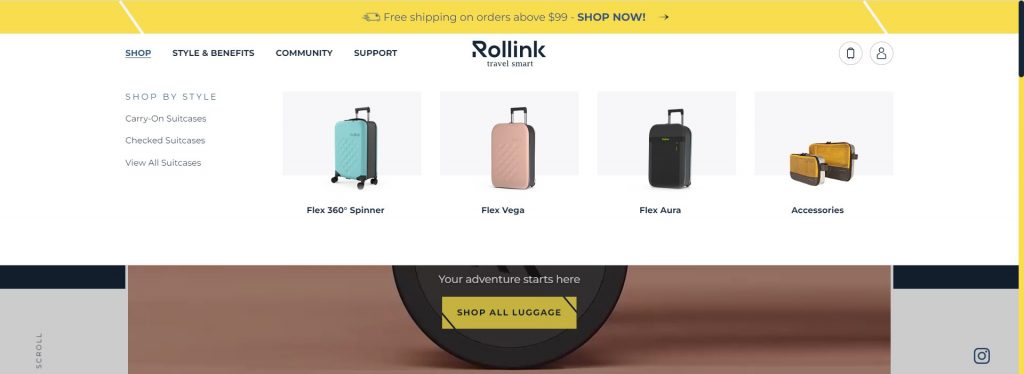
3. Impactful Visuals
Websites that contain high-quality, impactful images have a 47% higher click-through rate compared to those that don’t.
Visual elements help capture users’ attention and break up the text. Too many images, however, can slow down your website. If your media is affecting your loading speed, that means the visuals are taking up too much space.
Also, stuffing your website with a lot of images and videos can feel overwhelming and can deter users. According to Good Firm, 84.6% of designers agreed that crowded web design is the most common mistake small businesses make.
A clean, uncluttered design with several carefully chosen visuals is the most effective.
Here’s another example that originated in our design kitchen, that shows how engaging rich media can be. Tecnam, an Italian aircraft manufacturer, uses a variety of visual elements to grab the user’s attention.
From a video that greets the user right in the hero section to engaging animations of planes flying around the website, the media-rich website immerses the website visitor into a fully branded experience.

4. Benefits-Driven Copy
Findings from Nielsen Normal Group show that most users skim content on a web page, rather than reading through it fully.
Concise and to-the-point copy that uses easy-to-understand language increases usability for the website visitor by up to 58%, which in turn can have a positive impact on bounce rates.
The copy should explain the benefit of your product or service in a clear way. Avoid jargon and fancy language. Instead, speak the way your audience speaks to form a connection.
Let us show you an example of a benefits-driven copy that we’re proud of. Field Edge, a brand that offers field service management software, uses simple language and concise copy to describe the benefits of their offering, without copy-heavy paragraphs and complex terms: “Get growing. Complete more jobs faster. Streamline operations. Increase profitability.”
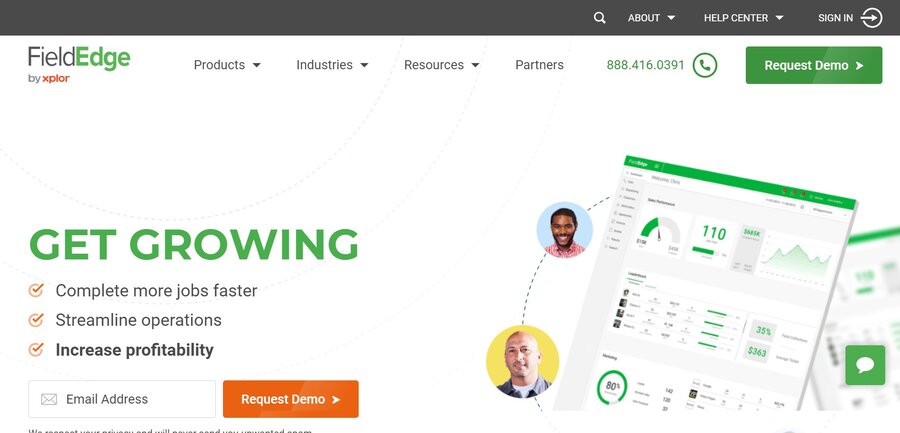
5. Specific Calls To Action
Call-to-action (CTA) buttons help facilitate the user journey and invite the user to interact with the website. So, what makes a good CTA?
Good CTAs are clear and specific, so users know what is on the other side of a click. Most importantly, they should be visible enough so the user can spot them right away. For example, highlighted in a contrasting color.
Here’s an example of prominently placed CTAs from a web design project that our team at Digital Silk worked on. LIG Solutions, the health insurance brand, uses specific language for CTAs and places them in contrasting colors and in colored boxes, so they’re very visible.
“Get in touch,” “View our services” and “Partner with us” are all specific and clear enough so the user knows exactly what’s on the other side of the click.
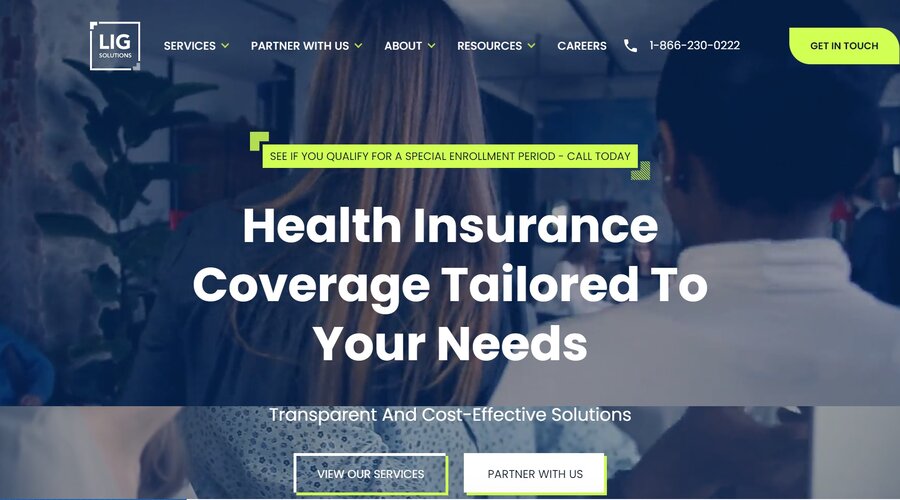
6. Fast Page Loading Speed
Page speed is one of the most important elements of web design. According to Google Insights, if a page doesn’t load in three seconds or less, users will most likely abandon your website and you will miss a possible conversion.
You can use Browser Stack to check your page load speed. If your website loads too slowly, try reducing the size of your images and/or cleaning up your media library.
7. Responsive Design
Responsive web design is a must in the digital age. The time has gone when businesses would develop a desktop website and ignore the experience of users who access their website on mobile devices.
Responsive web design provides a great user experience on all devices, whether it’s a tablet, laptop, smartphone or PC. It is created by using a fluid grid layout, which sizes the website elements proportionally, meaning that the width of elements grows or shrinks to adapt to the available screen size.
Here’s an example of a responsive website from the Digital Silk workshop. G Pen, an innovative vaporizer brand, provides a seamless user experience across devices as it adapts to any available screen size.
Here’s the desktop version of the website:
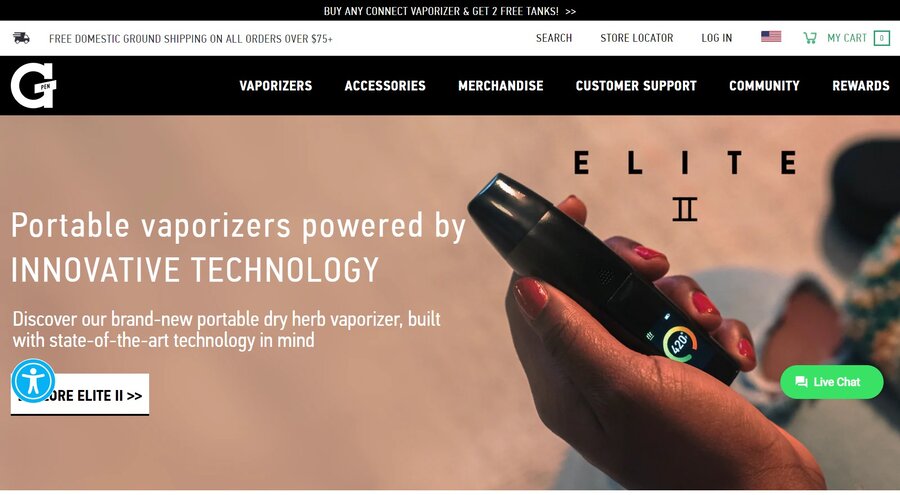
And here is the mobile version:
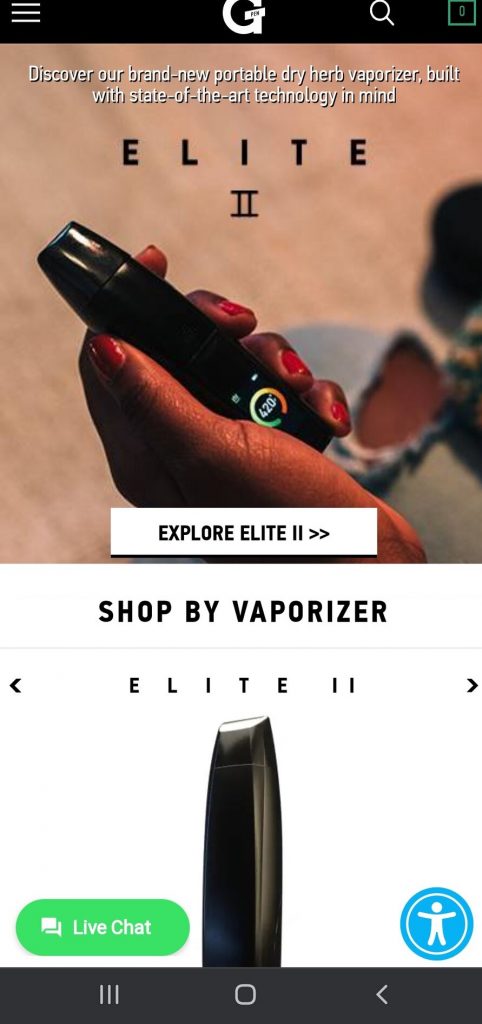
8. Social Proof
Social proof is evidence that supports your claim and increases your brand’s credibility. It includes customer reviews, testimonials, awards, and recommendations.
91% of users trust online reviews and recommendations as much as their friends. Reviews and testimonials from your previous customers help showcase your trustworthiness and can help nudge users toward conversion.
Let’s review an example of social proof from a web design project we mentioned earlier — Field Edge features client reviews on the homepage.
Visitors can both read quotes and watch video testimonials, to engage with the brand and hear about positive experiences, which will, in turn, help push them further towards conversion.
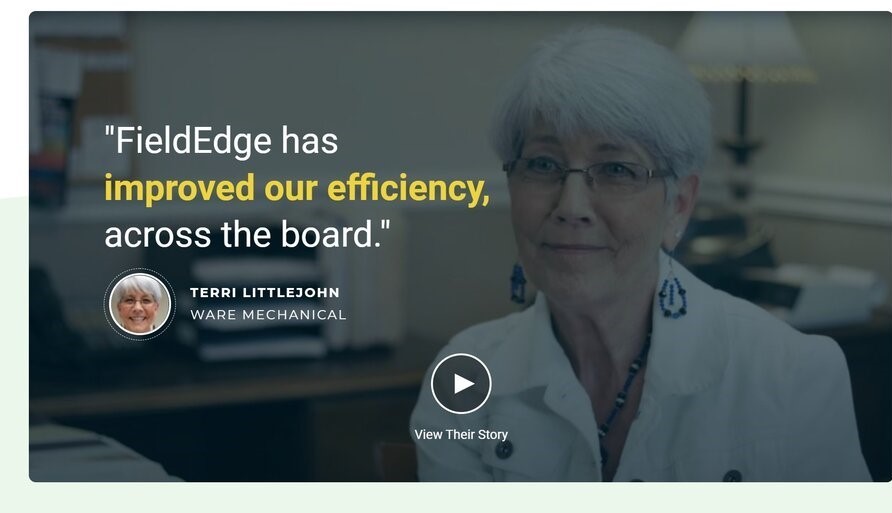
9. Brand Consistency
Consistency in web design means keeping branded elements the same throughout the website. It is important because it helps make your brand both recognizable and memorable.
At Digital Silk, we ensure consistency in web design by following detailed brand guidelines or a custom brand book, which includes each client’s selected brand colors, logo, typography and more.
Here’s an example of consistency in web design from our kitchen. Paul Stewart, a luxury clothing brand, creates a uniformity of elements so everything looks coherent. It applies the same typography across the website, uses a consistent color palette and implements the same image style, to spark brand recognition.
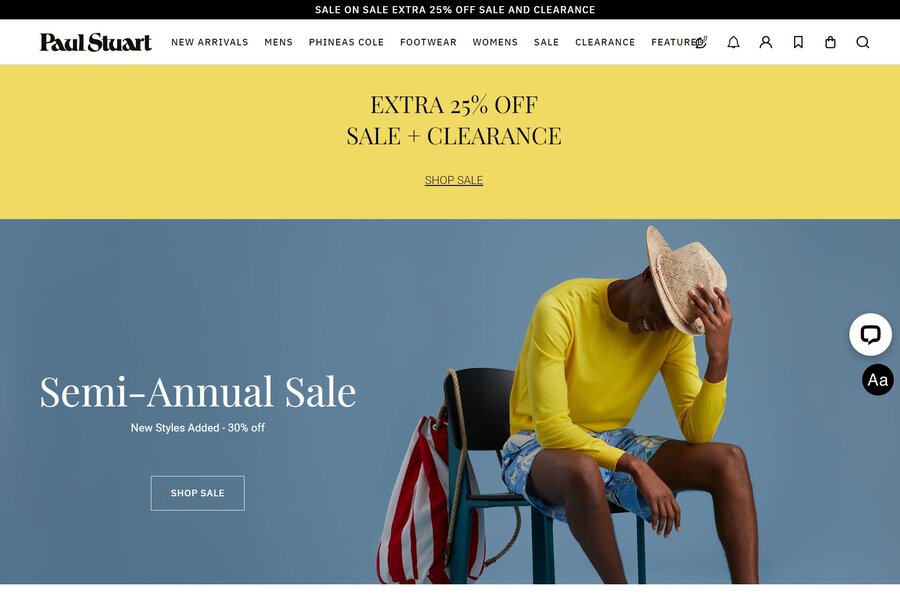
How To Find An Agency That Delivers Great Web Design
When choosing a web design agency, it is important to do your homework to ensure you are hiring the best experts for your website project.
1. List Your Website Requirements & Goals
The first thing you need to do is think about your business needs. These are some of the questions you may ask yourself when deciding on your website needs and goals:
- What are the goals that my website should support?
- Do I need an educational website or an eCommerce store?
- Do I want a website to generate leads or to integrate with the platform I use?
Once you know what you need and have a list of website requirements, you now have the brief that will help you jump-start your search for the ideal web design agency.
2. Set A Budget
It is important to decide on your budget for the project, so you can later align with the right agency.
While the cost of web design services varies greatly depending on the complexity of the project, defining a ballpark and asking the web design agency you’re considering for an estimate will help you manage your expectations and find the right fit.
3. Review The Agency’s Portfolio
This is a crucial step in the process of choosing a web design agency. Most professional web design agencies will have a portfolio on their website you can review, to see past examples of their work.
When reaching out to agencies, ask what similar projects they have completed in the past.
For example, if you’re looking to build an eCommerce store, ask what eCommerce projects they have worked on in the past. Or if you’re a B2B brand, seek previous samples in this domain.
Look for an established agency with years of experience in web design and development, proven expertise, and an impressive portfolio of designs.
4. Ask About The Agency’s Web Design Process
When you reach out to a web design agency of your choice, be sure to inquire about their web design process.
Professional agencies that create industry-leading websites typically follow an established set of steps in web design and development. They should implement the latest digital trends and best practices, and be able to offer professional recommendations throughout your project.
At Digital Silk, we start each project by researching your business, industry landscape, competitors, and target audience. The insights we gather here later inform the decisions regarding your web design.
5. Always Explore Reviews & Testinomials
When exploring agencies for web design, it’s important to consider the rankings, testimonials, and reviews of the local agency.
For example, if you live in Miami, FL, and want to boost your brand’s performance, have a look at the Designrush reviews. If the Miami web design agency you’re looking for is good enough, you’ll find additional information there on their service quality.
So always keep in mind to:
- Look for agencies that have high rankings on search engines like Google or Bing. This can indicate that they have a good reputation and are well-regarded in the industry.
- Check out their portfolio to see examples of their work. This can give you an idea of their design style and whether it aligns with your vision for your website.
- Read testimonials and reviews from previous clients. This can give you insight into their experience working with the agency and whether they were satisfied with the results.
- Consider the agency’s experience and expertise. Look for agencies that have experience working with businesses in your industry or that have expertise in the specific type of website you need.
Create An Industry-Leading Web Design With Digital Silk
At Digital Silk, we thoroughly understand why good web design is important.
We specialize in creating responsive, engaging, and optimized website designs that drive on-site engagement and conversions.
Here’s what our web design process looks like:
- Digital Strategy: At this stage, we learn all there is to know about your business, industry, competitors, target audiences, current strategy and goals, so we can craft a custom digital strategy and provide expert recommendations for your brand.
- Conversion funnel and user journey: Based on the insights gathered, we plan your website’s sitemap and informational structure, and define each stage of the conversion funnel.
- Wireframing: Next, our expert designers create a wireframe for your website to help you envision what it will look like.
- Design: When you approve the wireframe, our designers start crafting a unique user interface with your branded design elements, such as your logo, colors, typography and more, to ensure the final product is true to your brand.
Take a sneak peek at all we have to offer in the video below!
Wrapping Up On The Importance Of Good Web Design
Website design can truly make or break your brand. Every great web design includes the following elements:
- Accessibility
- Simple navigation
- Impactful visuals
- High-quality copy
- Specific calls to action
- Fast page loading speed
- Responsive design
- Social proof
- Consistency in branding
If you’re looking to design or redesign a website, be sure to carefully research web design agencies and:
- List your website requirements and goals
- Set a budget
- Review their portfolio
- Ask about their web design process
Your website design will only be as good as the agency you hire, so ensure you are working with the best in the field by asking all the right questions regarding your project.
When you partner with Digital Silk for custom web design services, you get access to a full team of in-house design experts, insights into new web design trends and best practices, and state-of-the-art tools.
We understand the importance of website design and take proactive ownership of every web design project and ensure full transparency, streamlined execution, and measurable results.
"*" indicates required fields


